
My addiction to social media got upped during COVID-19 when extraordinary images made regular and frequent appearances on Michael Haykin’s Facebook page. They were outrageous, demanding a response–beyond ‘o wow,’ although that worked as well. From mid-2020 and on to 2021 new images appeared almost weekly. Here’s one:
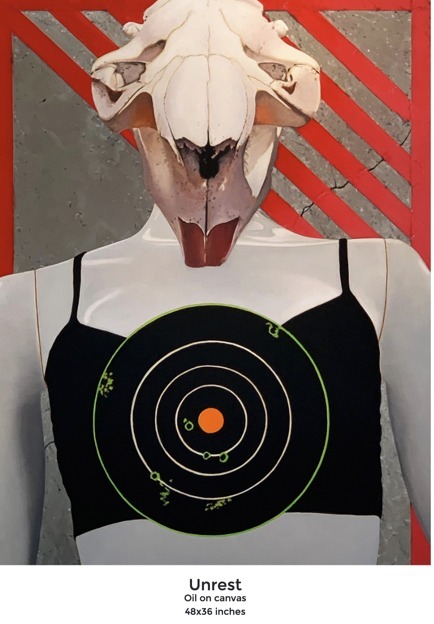
from the same artist who painted this:
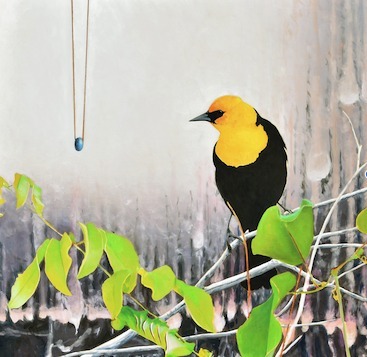
“Shiny Object” is a painting I have long coveted. I am that bird, tempted by the ring though surrounded by everything he needs – a fat caterpillar almost invisible in the foreground and thus taken for granted. A bird complicit in his own undoing. But then again, someone dangled that ring.
Michael’s paintings have as complex a meaning as the viewer grants. The gorgeousness of color and form and paint application can be enough. But the fragility within the commonplace in his work always makes me look twice. In Michael’s work, paradise always presents a shadow.
When this period ended, Haykin moved onto a new exploration, never lingering too long at any signposts along his artistic way – the gorgeous landscapes, the scratchings, the beetles. But then, we wouldn’t have any of these, had he stopped anywhere along the way.
Early 2020, had him painting The Four Seasons of Winter when the pandemic hit.
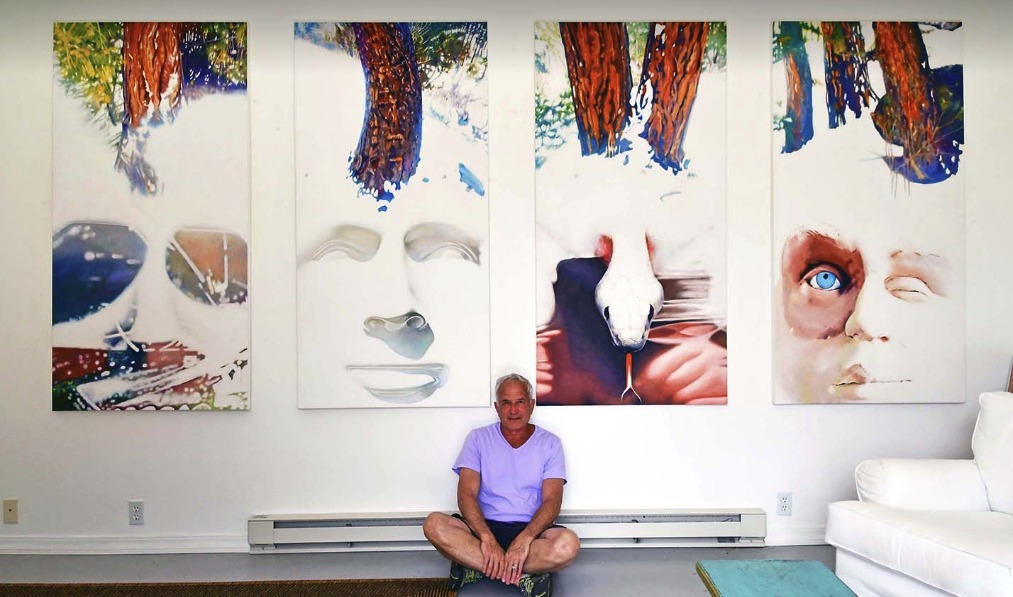
Michael Haykin in his studio
I was finally making headway on the as yet unnamed sequel to my first novel, No Name Key.
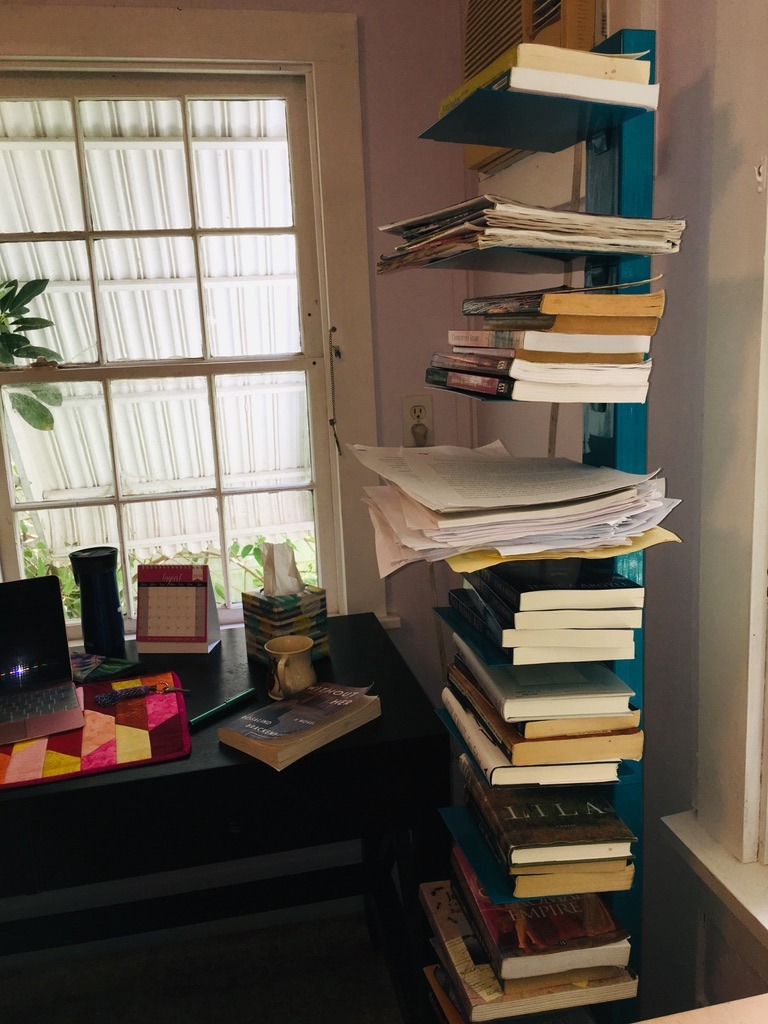
I moved to Key West in 2009, after Michael left and knew him by his work – I remember a yellow, gray and black painting at Art Basel and a show of his work at Lucky Street Gallery in Key West. We were Facebook friends; I was bored, and the pandemic was long. The paintings were unusual and exciting, so I made up fantastical tales about each and posted them on his page. So when Michael asked if I would write the text for his show, we didn’t know each other very well.
I thought it important to let him know where we differ on worldviews, so I emailed my thoughts to him and waited. This was his show, but I had to be free to interpret it as I saw fit, with the caveat that he would choose what he wanted to use. It was very important to establish these conditions early on.
Three days later, he wrote, “Write whatever you want. I’ll leave it up to you.”
“Hell yes,” I said, realizing that, of course, this is what he would say, because no one could ever tell him what to paint.
Michael Haykin doesn’t care if you like his work, because ‘like’ is the least of it. Or he would never produce work like “Small Song”–a painting he describes as “the reason galleries/museums exist.” But I could live with these images in my home, because nothing is more depressing that a decorative image of captive flowers in a pretty vase.
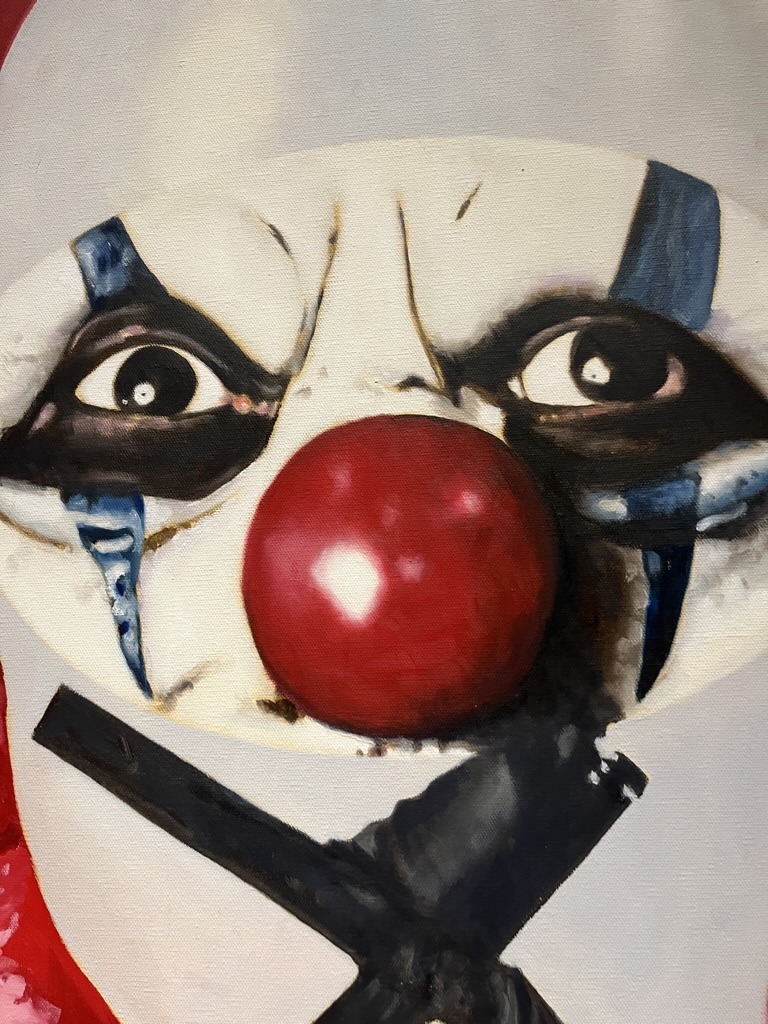
Giving myself over to Michael Haykin’s work meant temporarily abandoning my novel, but the challenge of crafting a literary response to art I loved was too intriguing to refuse. We write alone and often for no one, or at least it feels that way and having the company of an artist who delights in the discussion of form and idea was a gorgeous dream-and so we began.
As I made my way through the work, it sometimes read like a Kubler-Ross fever dream, the stages tossed like dice in some madman’s fist in search of a formula or direction.
Slowly, a pattern emerged, and the story could be told.

The exhibition required three forms: essay, poetry and flash fiction.
And these would be challenging. And it was in the writing about Painting A Pandemic that I discovered what this series of paintings was all about.
‘Write what you want to know,’ is much more powerful than ‘write what you know,’ and Michael shares that sentiment, always painting what he hasn’t painted before to see what happens.
My greatest challenge was writing what we later referred to as the “black rage paintings.” And while I am comfortable writing from the perspective of a moth or a young boy, or an old woman, I wasn’t comfortable writing from the black perspective, probably because it had been co-opted often or used to virtue signal. Who was I to chronicle the black experience? But I have an opinion and I have a voice and avoiding it was worse, so I wrote from the perspective of a white woman’s struggle to comprehend the meaning/source of that rage and gain some inkling of what it actually means. This is that poem alongside Michael Haykin’s painting entitled “White Lies.”

“Taking Flight,” stopped time, as death does, marking a turning point in the series. Michael’s mother, Carol, was a strong-willed, independent woman – a nurse who died of COVID while Michael was in the throes of the series, in a frenzy of production. Like many who died during the acute era of COVID, she was compliant and isolated. This poem chronicles her life and the last conversation she had with her artist son.
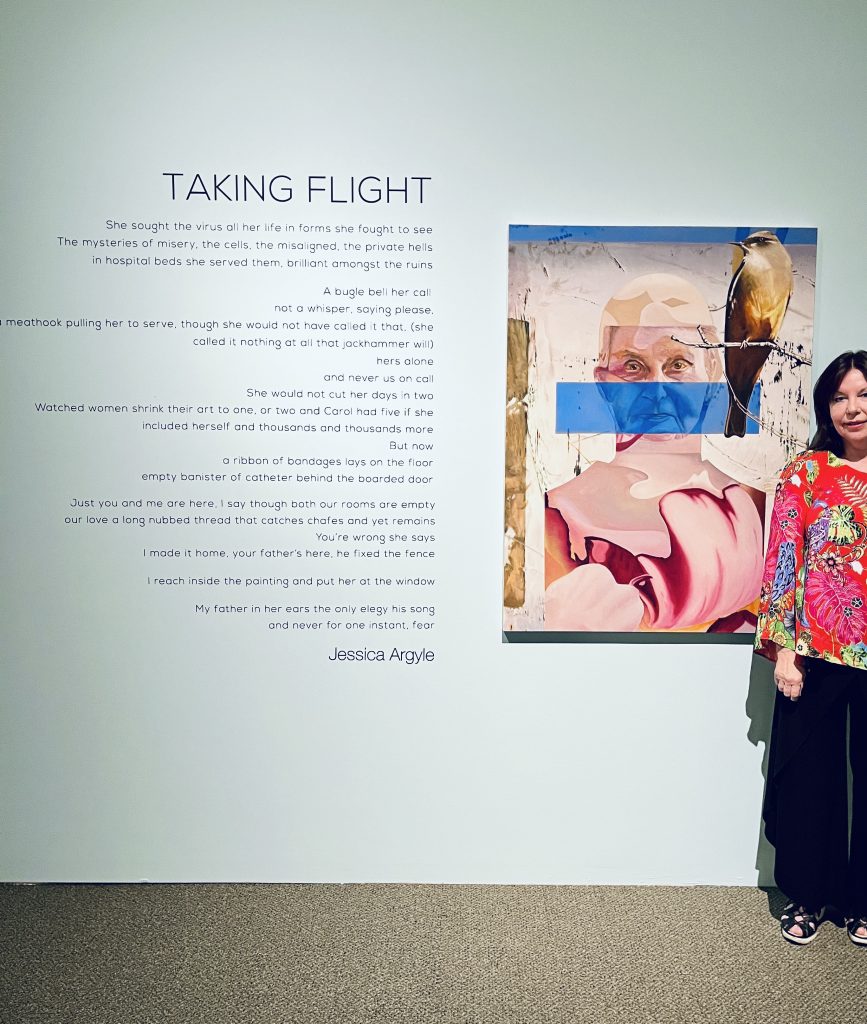
One of the gallery walls

As understated and effective as the catalogue cover

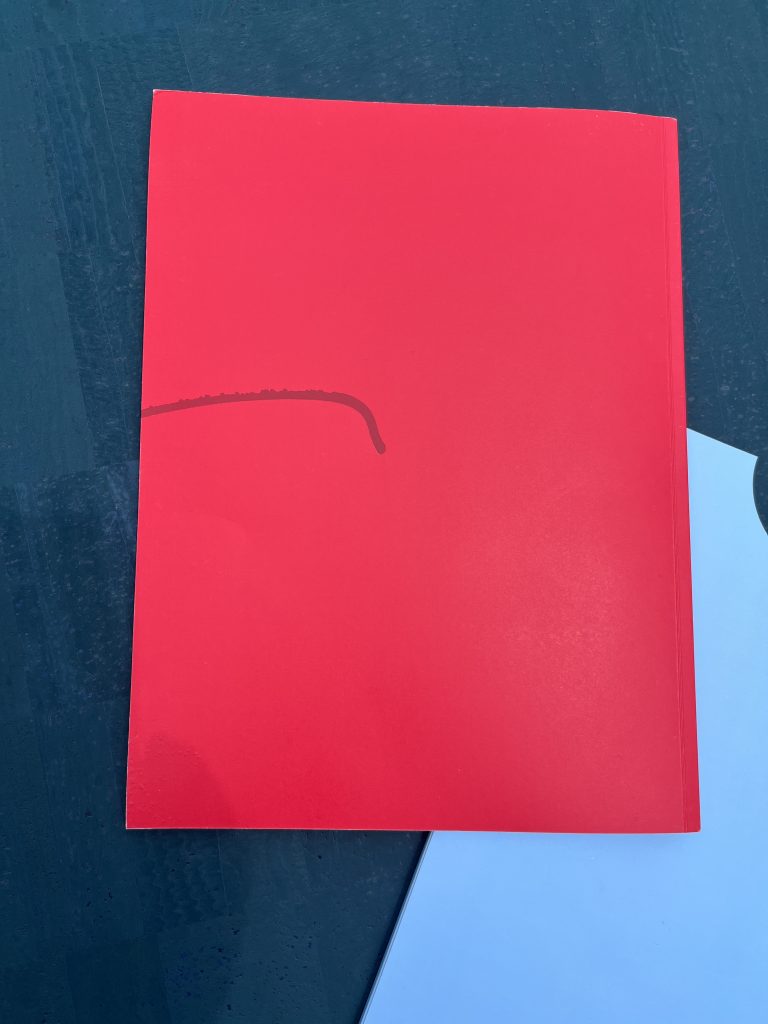
Michael Jorgensen and indicative of his restrained graphic style.
When not producing catalogs of Michael Haykin’s work he photographs haunted spaces, lost Edens, sometimes with compassion, other times with implied menace–(do NOT enter that room).
I produced a total of thirteen pieces, some for the catalog, some on the gallery wall. Then discussions began on what to do with the unused poems and flash fiction. They didn’t have to do this, but it is a testament to the respect Michael Haykin, Michael Jorgensen and Jessica Ruhle, Yellowstone Art Museum Director have for the artist’s work that they created this gorgeous tri-fold insert with my work.


Michael Haykin standing next to Insurrection, 144X96 and one of two enormous nine-panel paintings in the exhibition
Epilogue:The Spell ushers in the third act of the series.
Images from this section suggest the possibility of a new model of partnership rather than human dominance of nature, nations, fellow species. In these images, flora and fauna merge with the human form in an imagined landscape where curiosity replaces fear. Yet for all that, a thrill of nervousness runs through an encounter with these unknown creatures.
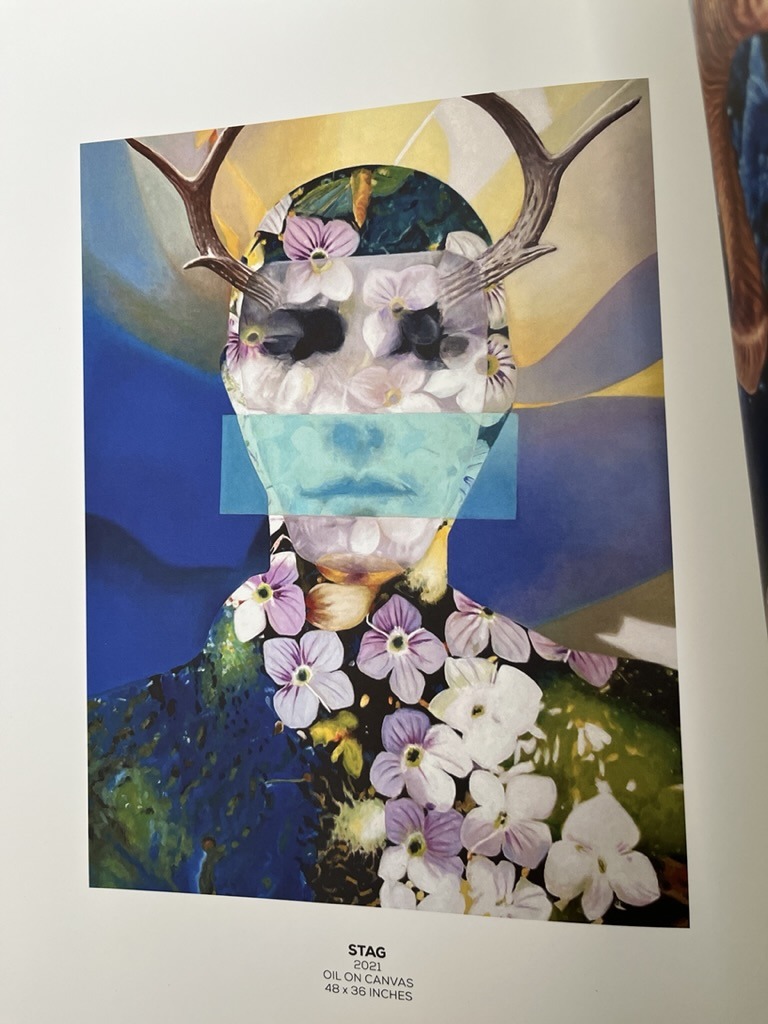
Yes, I would throw caution to the wind and follow this seductive Mandrake.
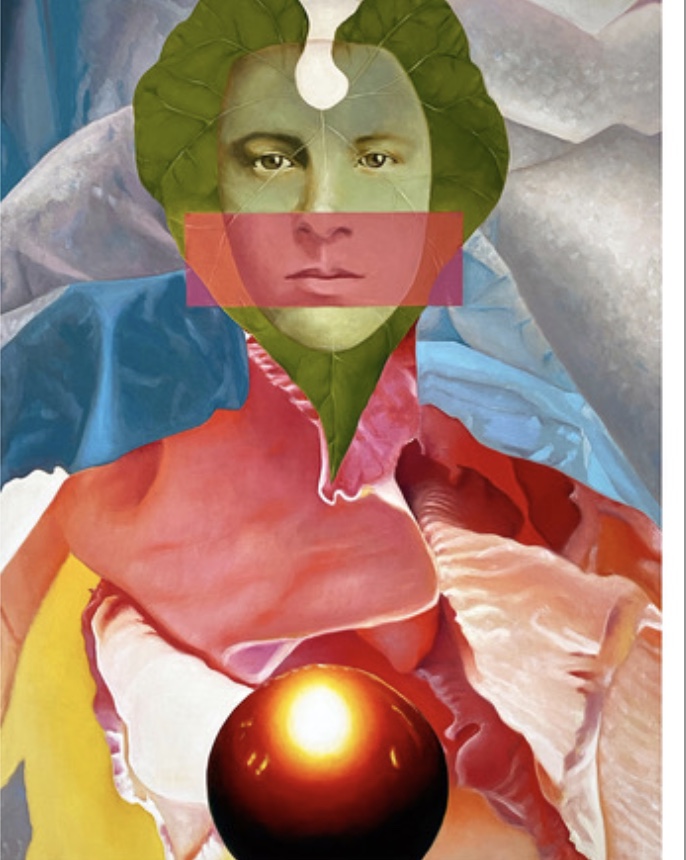
I have very few images of the opening, overwhelmed by the excitement and graciousness of guests who came to see and celebrate Michael’s work, including some long-time supporters and patrons.
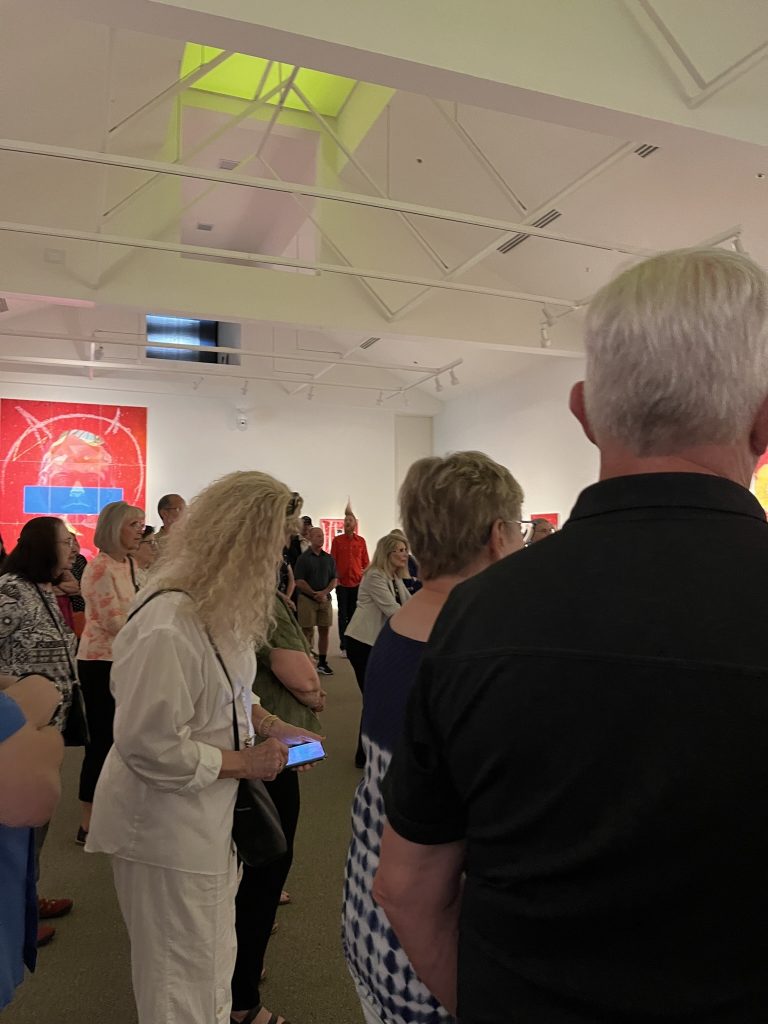
Some fabulous friends
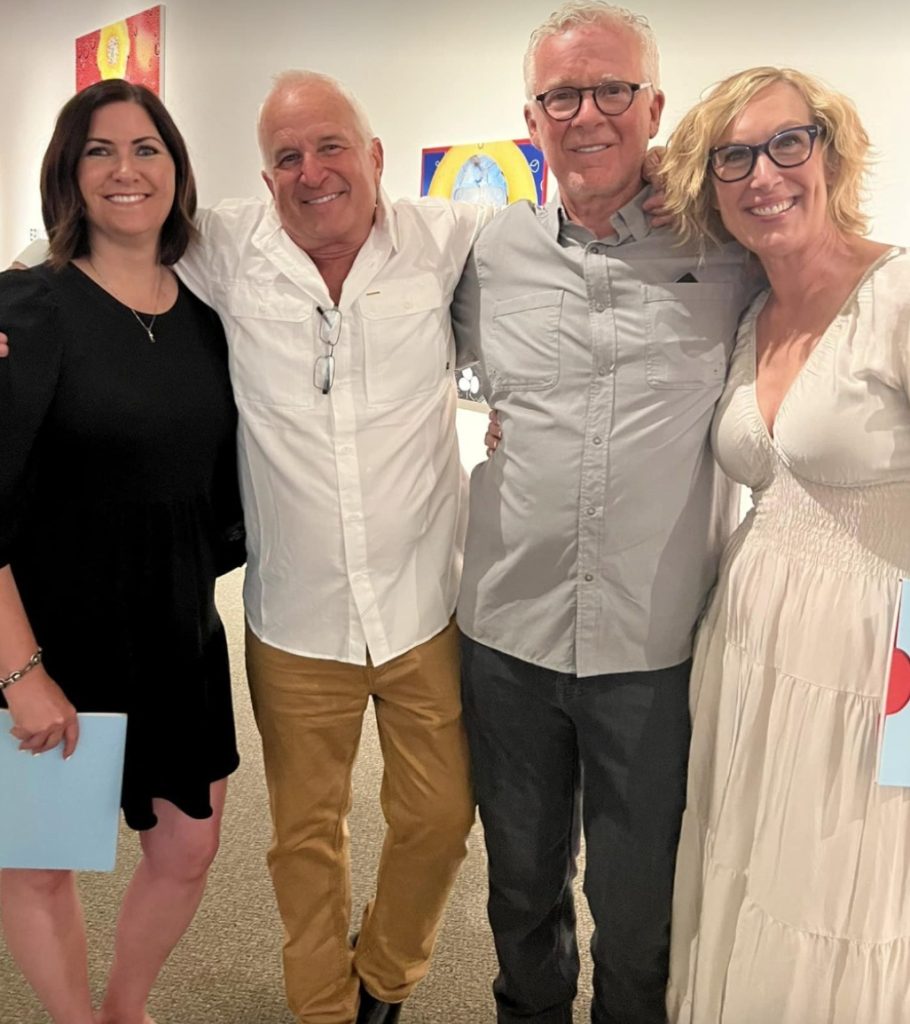
Day Two I read some of my work and Michael and I discussed artistic collaboration. I think we are entering an interesting place, redefining and revising ways of presenting work.
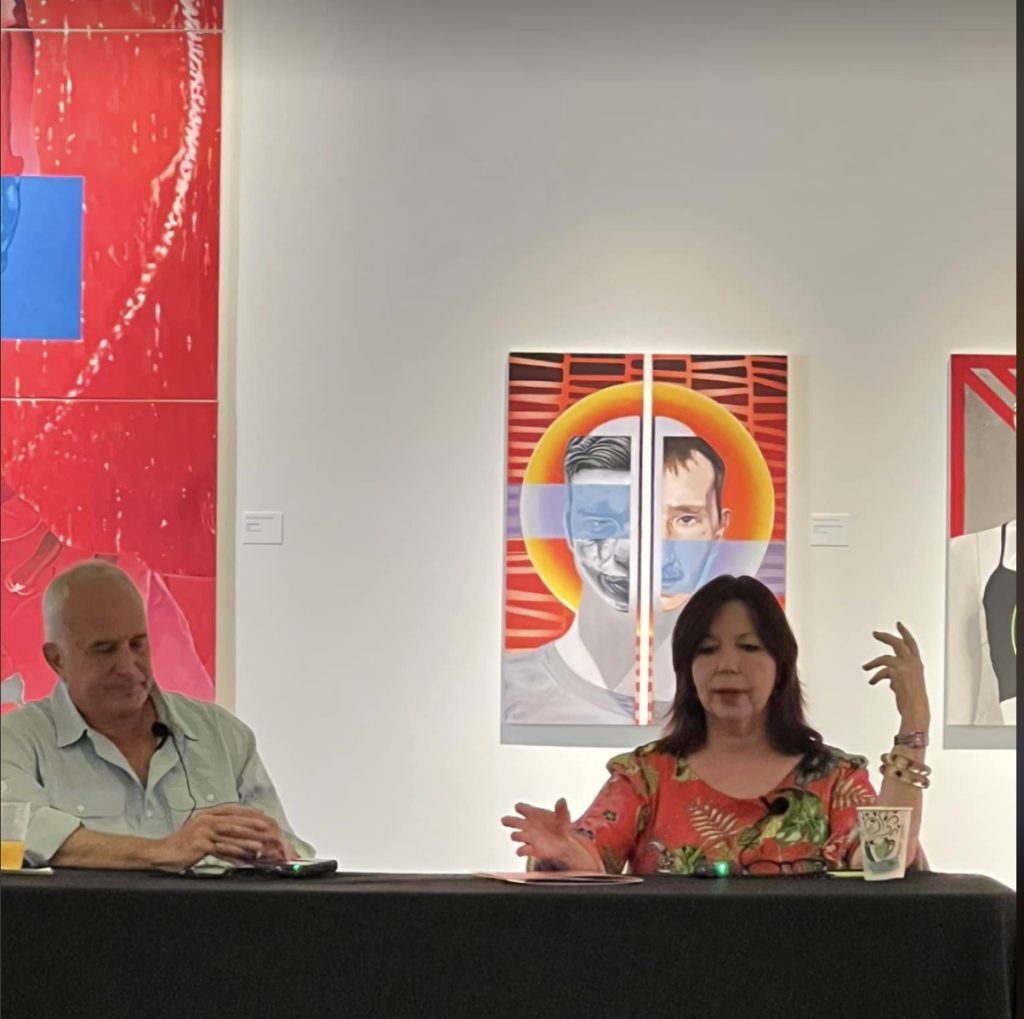
The radical portraiture of PAINTING A PANDEMIC is on exhibit at the YAM until October 2.
Here’s the archived link https://archive.ph/jlmHl

ok so I shall become a millenial and just say WOW…how’s that for magical and captivating thinking…lol
seriously Jess…a fascinating and exciting journey. Sort of like Elle’s journey to knowing.
It was wonderful! Thank you!
ok so I shall become a millennial and just say WOW…how’s that for magical and captivating thinking…lol
seriously Jess…a fascinating and exciting journey. Sort of like Elle’s journey to knowing.
Jessica, you are amazing! The paintings, the writings, what an astounding conversation.
Thank you! It was great back and forth and really tested my abilities.
I loved reading this account of how Jessica’s poems came to accompany Michael’s artwork, and seeing the stunning outcome of their collaboration. I’m always fascinated by the inter-actions between artists of different genres, what we can create together out of what we create separately, how ideas spark and images coalesce, how words are sometimes lacking in the face of sheer paint or sculpture, and how they also can knit things together.